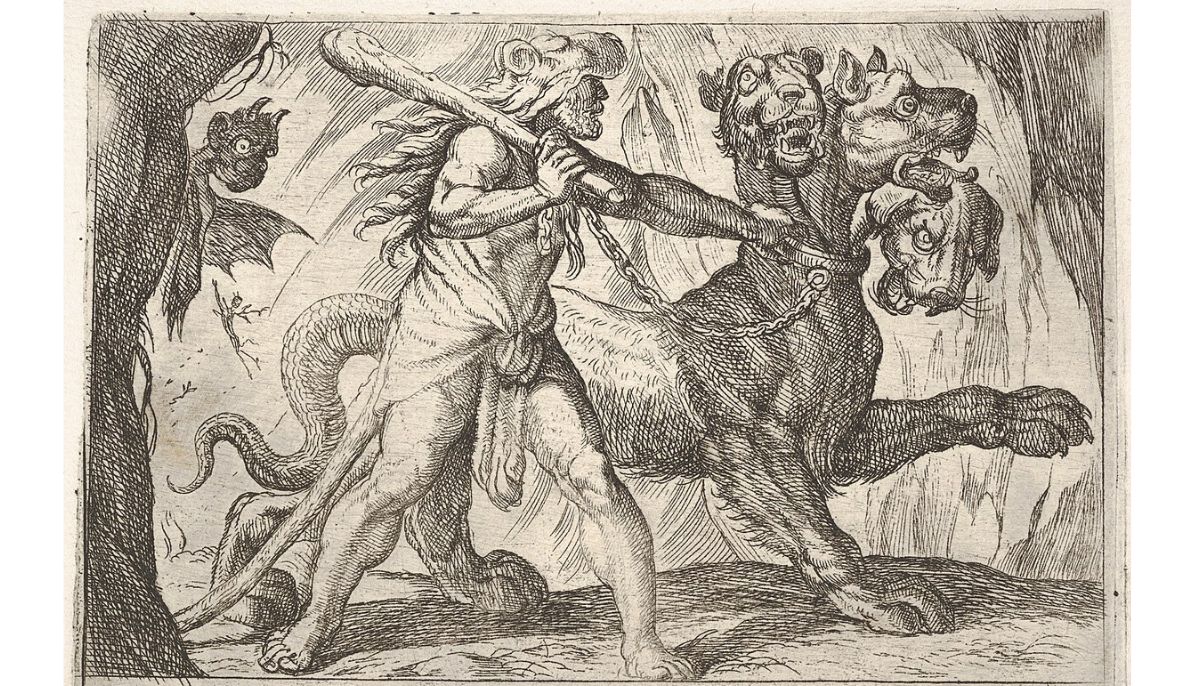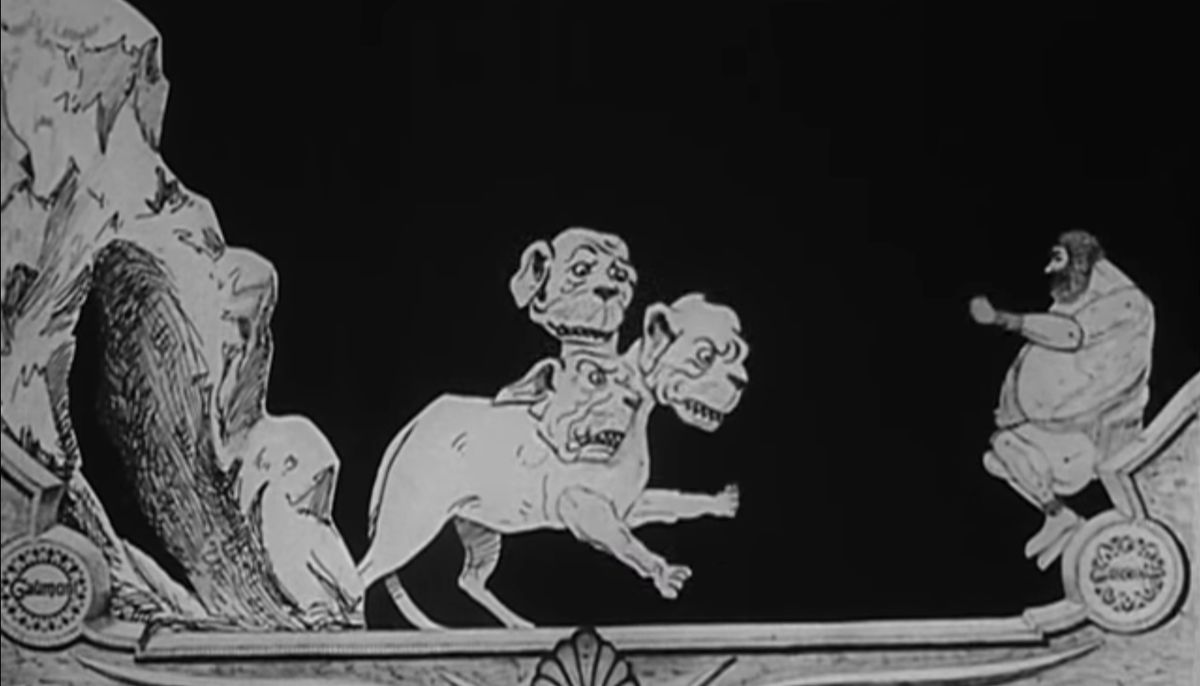Venture into the depths of Greek mythology and meet Cerberus, the formidable three-headed hound of Hades. Discover its role in the underworld, the myths it guards, and the intricate web of Greek legends it weaves.
What did the Cerberus look like?

Cerberus, the guardian of the Underworld in Greek mythology, was a monstrous three-headed dog. This creature stood as a sentinel at the gates of Hades, ensuring that no living soul could enter and no escaping soul could leave without permission.
Each of Cerberus’s heads bore sharp teeth, and his serpentine tail was equally fearsome. The beast’s mere presence was enough to strike terror into the hearts of mortals, as he epitomized the boundary between the world of the living and the realm of the dead.
As a symbol of the Underworld’s formidable power, Cerberus played a pivotal role in several mythological tales, making him an enduring and iconic figure in Greek mythology.
What Breed of dog was the Cerberus?
While the exact breed of dog that inspired the creation of Cerberus remains a matter of speculation, one candidate often considered is the Molossian breed. This breed, renowned for its robust and fierce nature, possessed a formidable presence in ancient times, particularly in combat and protection roles.
The Molossian dogs were known for their impressive strength and resilience, characteristics that align closely with the imposing stature and ferocity attributed to Cerberus. Ancient Greeks recognized the Molossians for their prowess in guarding, hunting, and warfare, making them a likely source of inspiration for the mythological hound that guarded the realm of Hades.
While the Cerberus myth may not be directly tied to any specific dog breed, the Molossian breed’s reputation for strength and courage aligns with this legendary creature’s formidable image.
With its multiple heads and otherworldly attributes, the Cerberus remains a testament to the captivating blend of reality and imagination permeating Greek mythology’s rich tapestry.
Was Cerberus Evil?
Often portrayed as a fearsome “hellhound,” it’s crucial to understand that Cerberus, in Greek mythology, was not inherently malevolent or evil. Instead, he held a crucial role as a working dog within the realm of the ancient Greek underworld, under the guardianship of Hades (Pluto), the god presiding over this enigmatic domain.
Cerberus’ primary duty was noble and indispensable: to serve as the sentinel of the entrance to the realm of the dead. His task was twofold – to bar the entry of any living being seeking passage into the realm of the deceased and to ensure that departed souls did not attempt to escape their appointed place of rest.
In this context, Cerberus emerges as a dedicated and dutiful guardian, faithfully executing his assigned role without harboring any inherent malevolence. His actions were driven by purpose and loyalty to his divine master, Hades, rather than any sinister intent.
Mythic origin of Cerberus
The mythic origin of Cerberus, the fearsome three-headed hound of Hades, is closely tied to the Underworld and its ruler, Hades. According to Greek mythology, Cerberus was born to Typhon and Echidna, two monstrous beings associated with chaos and the earth.
Heracles and Cerberus
In the annals of Greek mythology, the daunting task of subduing Cerberus fell to the mighty Heracles, as one of his Twelve Labors. With resolute determination, Heracles ventured into the depths of the underworld to face the formidable guardian.
After a fierce struggle, Heracles succeeded in overpowering Cerberus, demonstrating his unparalleled strength and indomitable will. With the colossal hound under his control, Heracles embarked on a daring journey back to the surface, demonstrating his unmatched prowess as a hero.
Upon reaching the upper world, Heracles brought Cerberus before Eurystheus, the king who had set him on this formidable quest. The sight of the fearsome guardian struck awe and fear into all who beheld him, affirming Heracles’ unmatched power and courage.
However, this was not the end of Cerberus’ journey. Following his display to Eurystheus, Heracles, true to his noble character, returned Cerberus to his rightful place in the depths of the underworld. This act not only attested to Heracles’ sense of duty but also emphasized Cerberus’ essential role as the guardian of the realm of the dead.
Who killed Cerberus?
In an intriguing story variation, relayed by the sixth-century AD Pseudo-Nonnus, Heracles’ encounter with Cerberus took on a unique twist.
According to this version, Heracles descended into Hades not only to face Cerberus but also to abduct Persephone, the queen of the underworld. Heracles confronted and ultimately vanquished Cerberus in this daring feat as he made his audacious ascent back to the world above.
Regardless of the rendition, the tale of Heracles and Cerberus is a testament to the hero’s unparalleled strength and valor.
It exemplifies the enduring theme of mortal heroes facing formidable challenges, even in the shadowy realms of the afterlife. As the sentinel of the underworld, Cerberus remains an iconic figure in Greek mythology, forever intertwined with the heroic exploits of Heracles.
His myth also showcases the heroism and strength of Heracles, who faced this formidable challenge as part of his legendary feats.
Want to know more about the creatures and monsters of Greek Mythology?

Explore more articles like this in our broader series on Greek monsters. To delve even deeper into the world of mythical creatures, be sure to check out our comprehensive hub article on the monsters of Greek mythology.






